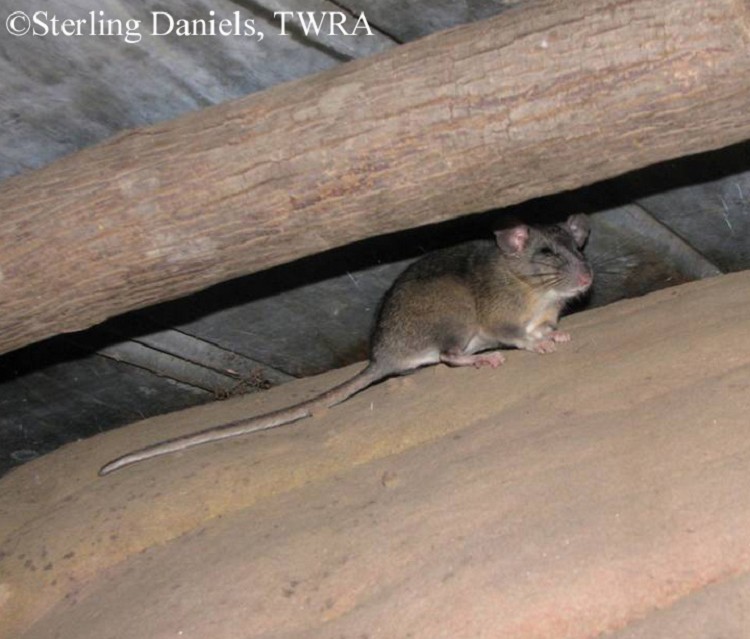Eastern Woodrat, Neotoma floridana
Two subspecies occur in Tennessee, Eastern Woodrat (N. f. illinoensis) and Southern Appalachian Woodrat (N. f. haematoreia). The Southern Appalachian Woodrat occurs in the southeastern part of the state, while the Eastern Woodrat occurs in the western part of the state generally.
Description:
A medium-sized rodent with long, thick fur, prominent ears, large eyes, very long, distinct whiskers, and a furry, bicolored tail that is less than half the total length of the body. The color of the fur on the back is grayish-brown mixed with some black, while the throat, feet, and underside are white. Tail color is sharply contrasted between blackish brown above to white below.
Length: 12.3 - 17.0 inches
Tail: 5.0 - 8.0 inches
Ears: 0.8 - 1.1 inches
Weight: 6.0 - 12.0 ounces
Similar Species:
•Brown Rat has a more elongated snout, smaller eyes, and nearly naked tail.
•**Allegheny Woodrat is larger than Eastern Woodrat, but identification can only be confirmed through detailed analysis of skull and dental formations, and possibly an expert.
Habitat:
The Eastern Woodrat primarily occurs in forested areas, but also uses caves and rocky outcrops. The Southern Appalachian Woodrat is found in forests, and it occurs on talus slopes.
Diet:
They are primarily vegetarians eating herbs, grasses, seeds, nuts, fruits, and most parts of a tree (buds, leaves, roots, stems, and bark).
Breeding information:
Woodrats mainly breed from February to September, although they may breed year round. Litter size ranges from 1-6, but averages 2-3, and up to three litters may be produced annually. Their gestation period is around 35 days and females can mate immediately after giving birth. The blind and hairless newborns open their eyes around the 15th day and are weaned by 3-4 weeks.
Status in Tennessee:
Both subspecies are uncommon in Tennessee, and their status is Deemed in Need of Management by both TWRA and Tennessee Department or Environment and Conservation (TDEC).
Fun Facts:
•Woodrats are commonly referred to as "pack rats" from their habit of collecting shiny objects such as bottle caps, coins, nails, and keys and carrying them back to their nests.
Best places to see in Tennessee:
Lowland hardwood forests in western Tennessee, or crevices and caves on rocky, limestone bluffs and brushpiles near forest edges in eastern Tennessee.
